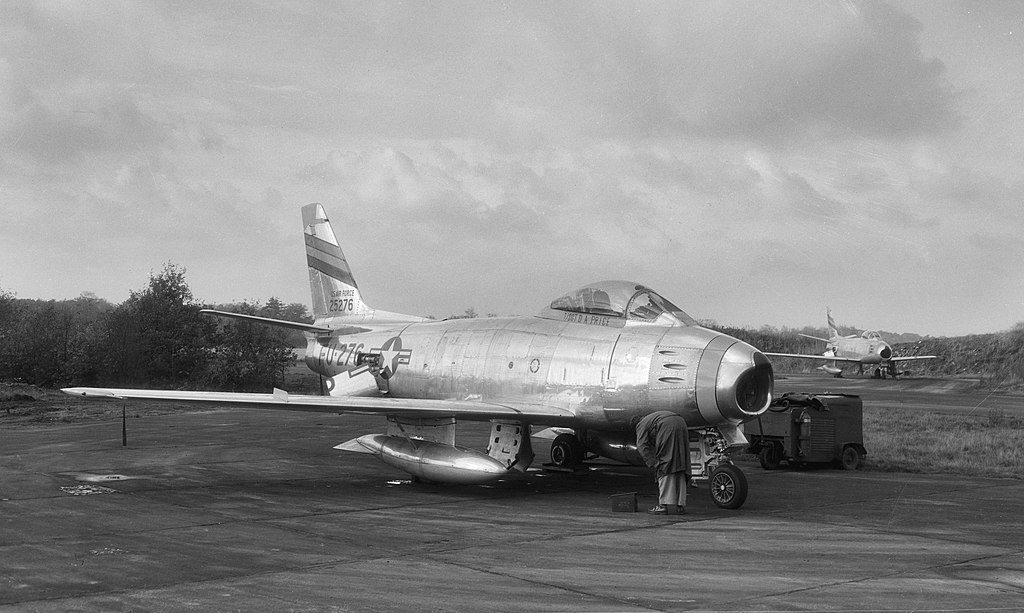The lovely F-86 Sabre always seems to have its speedbrakes deployed when parked, to the point that most of the results I found looking for a good photo for this question were scale model forums debating the exact angle at which to position them.
However, none seem to offer more than wild speculation about why they drop. The guesses mainly fall either into "it's held up by hydraulic pressure, so they fall down when the hydraulics are off" or "it doubles as a maintenance access door for some kind of ground servicing"... but with no evidence either way.
Interestingly, the FJ-2/FJ-3 Fury carrier derivative seems to not have had this quirk, even though my limited knowledge is that the changes were mostly just in the wing and landing gear.
 (Source)
(Source)
It also looks like the F-86D Sabre Dog and its descendants parked with the speedbrakes stowed, although that was a different fuselage design.
So my two-part question is:
- Did the speed brakes dropping open when the F-86 was parked serve some intentional function (such as servicing or inspection access), or was it just that they didn't have a mechanical lock to hold them up?
- Which of the many variants/derivatives of the Sabre had the droopy speedbrakes?
- For bonus points, what was changed to keep the speedbrakes up on variants like the Fury, and why?

